- Home
- Lloyd Jones
Mr Vogel Page 15
Mr Vogel Read online
Page 15
A cynical acquaintance says I’m merely enjoying a spot of self-punishment when I sleep out at night during my walks.
‘It’s just manageable danger and manageable suffering – you know you can run home to mummy tomorrow’. Cow.
I’ll tell you about another day’s walking.
I start walking as the sun rises. I’ve seen off the false dawn. I walk steadily, almost dreamily, through the scurries and scratches in the hedgerows. The light takes hold and the sun rises slowly and undeferrably through the mists. I’m on a beach, walking past marshy ground, past sedges and rushes, scrambling through pebbles and shells. The walking mantra kicks in. A thought enters my head, and in tune with the rhythm of my feet it establishes a theme, then recapitulates... I find the same theme in my mind over and over again. Apparently, this constant repetition is soothing. It’s automatic when I do rhythmic things like weeding or digging or walking. Perhaps it has something to do with lullabies; a recollection of my mother’s rondeaux as she swayed me to sleep. The most celebrated case of this ‘lull yourself to happiness’ method is The Way of a Pilgrim, the story of an anonymous 19th-century Russian peasant who wanted to say an unceasing prayer as he walked: Lord Jesus Christ, Son of God, have mercy on me, a sinner.
Likewise, during my walk I may find myself thinking of a typical Welsh grouping of three: for example, as my feet hit the ground I may be thinking of three fundamental verbs – to be, to do, to die. You may have a different choice, such as: to drink, to eat, to sleep. And so on. How strangely the mind works when left to its own devices.
Today’s thought is about saints. Saints walk in and out of my mind all morning like one of those tunes you wake up with and can’t get out of your head. Saints. Anwen Marek has brought saints into the picture. She has sent me a small St Christopher medallion for me to wear on my walks. He is the patron saint of travellers. I infer she is religious or superstitious, which is the same thing to me. I sling it in the Vogel drawer. It has accompanying guff on the saint. He’s a giant. He starts on the devil’s side but defects to God after a winning streak by the man in white. As a mark of his devotion he’s told to ferry people across a river; one day he has to carry a baby across the water but the child is too heavy, because the infant is also carrying the sins of the world. Ole Saint Christopher has joined the winning side, which don’t endear him to me. Maybe I should go for our own St Dogmael, patron saint of children learning to walk – and according to some, patron saint of limbless children. Or St Mathurin. He’s the patron saint of fools and idiots. Better still, perhaps, St Giles, patron saint of cripples. He’s one of these saints from a rich, aristocratic family who takes to the woods in search of salvation. There have been many historical euphemisms for madness, and nearly every victim ends up in the woods. Lancelot the Wanderer ended up mad in the woods after his fling with Guinevere took the original route to romantic suicide. Wales has Myrddin (Merlin) the magician: he lost the plot big style and spent a lot of time talking to an ill-mannered piglet in the shade of an apple tree. It’s all there in the Black Book of Carmarthen: poor old Myrddin endured twenty bouts of madness on his way to becoming a legend.
Anyway, St Giles is lurking about in his French wood in a state of abject poverty etc. when the local king happens along, chasing some poor hapless creature – this is a regular theme in saintly stories, which are thronged with nasty kings pursuing fluffy little animals into the undergrowth. The saint shields the animal or conceals it in his/her underwear, and the king promptly sees a shining light, repents, and says ‘sorry brother, verily I’m a true bastard’ and gifts the saint a piece of land the size of Canada, builds a church and renounces his evil ways. Unfortunately for St Giles, the ending isn’t entirely happy. Nasty king comes along chasing hind. Hind jumps into thicket. Giles halts the fun and saves the deer (female, so Giles also becomes the saint of nursing mothers) but he takes an arrow in the leg, rendering him a cripple. He limps around for the rest of his life comforting himself with the knowledge that he’s the patron saint of cripples. Great. His churches spring up all over the place, usually at crossroads so that pilgrims can call for a chat and a cuppa. Yes, I’ll side with St Giles. We’ll make St Giles the temporary saint of the Vogel story, just to please Anwen.
Hope you’re still with me on this little quest of ours. You better had be. We’ve a long way to go yet. Let’s keep on walking, with or without the saints. Round a headland, prospect of a new moon bay, fine white sand, the sea brilliantly blue and lithesome. Unbelievable. Is this really happening? In front of me at the edge of the water there are two moonmen, like Neil Armstrong and Buzz Aldrin just stepped out of the lunar buggy, walking about in that peculiar moony walk, slowed down like a film at the wrong speed, arms out like Mr Blobby, circling a canister on the lip of the water, bending down to look at it and poking it with their gloves. Two more men come towards me with dogs, those tall ridiculous-looking clipped poodles. I hazard a wild guess – there’s something about their manner and appearance – I ask if they’re Londoners and by golly I’m right. I guess wildly again at south of the river, Southwalk way perhaps, and I’m bang on. We share a larf. I say I don’t believe what I’m seeing, but I’m bleedin’ right enough me ole mate, there are two moonmen in front of me. Someone walking their dog early on has come across a canister with a skull and crossbones on it, or one of those radiation signs, some warning anyway, and the emergency services are there, the moonmen in orange radiation suits with helmets, local firemen standing like chocolate soldiers at the top of the strand, people lurking with their hands in their pockets, the world watching this little drama unfold under a fresh morning sky with a light breeze and creation’s in a welcoming mood, doorstep newly washed and gleaming, smelling nice and friendly, and I’m free to walk in and out of this soap opera, this moving tableau, whilst old Vogel there with his twisted little legs is tied like a dog to his kennel. The denouement comes: down on the shore the men in their all-over suits like neighbourhood cosmonauts jerk their thumbs in an OK sign and the firemen go down with a tractor and trailer, take the canister away, relief in the air, everyone goes, dribbling off to embroider the story, already a mini-epic forming, twisted and reshaped, given tenses and syntaxes, breaks, dramatic pauses, flourishes, climaxes, a pixel of memory glowing in the humming recesses of each brain, an anecdote to link arms with other anecdotes across the torrent of time, a bridge of memories to the other side of being. I walk into the nearby hamlet to gather more information. The canister contained a super-condensed matter from which soap is made. Off I go, away along the shore, the event is over and my parcel of memory is wrapped and piled with the other memories ready for opening, when the time is right, or perhaps sneakily before the allotted moment.
The trip over, I re-established contact with the Marek woman.
She had been busy, as I expected, but she was just as fond of tangents as I am, and instead of concentrating on the Vogel issue she had gone somewhere quite unexpected.
I e-mailed her with the saints meditation and jokingly designated her St Christopher and myself St Giles in our impending peregrination through the Vogel morasse, which was taking on Bunyanesque dimensions.
She thought this duly appropriate, since she would be going on the great Spanish pilgrimage to Santiago del Compostella. St Giles’s mother church was on this route. She was seeking absolution for provoking the breakdown of her marriage. Had I been married?
No.
Did I think it possible to gain forgiveness with an act of penitence?
No.
What was my walk about then? Was I sick and hoping for relief? Was it a secular pilgrimage? An act of repentance? A visible sign to the world that I was either disturbed or contrite?
That got me thinking.
Now she was off after another hare.
‘Do you know what guides you on your way?’ she asked.
‘No, and I’m entirely sure it’s not some crackpot divinity with nothing better to do.’
‘No, I mean physicall
y.’
‘No.’
‘Ha! Gotcha!’
‘Don’t be so bloody childish.’
‘I’m not. No-one knows, exactly, how we make mental maps and how we know where we’re going. But you might take a look at the pineal gland and the hippocampus, both of them in your bird-like brain.’
Getting cheeky now. I look up pineal. It’s also known as the Third Eye and it has mystical qualities. Descartes believed it was the heart of the human soul. It contains a complete map of the visual field in front of our eyes. It regulates our daily body rhythms and the day/night cycle. The pineal gland is also implicated in Paget’s Disease. Wow! Here was a tenuous connection with Mr Vogel!
The pineal has magnetic material in birds and animals and is the centre for navigation. It may be important in human navigation and a number of studies are being conducted worldwide into this possible link.
The pineal, then, seems to monitor magnetic fields and helps align the body in space.
It could even be the evolutionary forerunner of the modern eye. It’s large in children and shrinks at puberty. It plays a major role in sexual development, hibernation and sleep patterns. It may also be linked to psychic powers. So the pineal gland is the ideal gift for an adolescent who’s about to sling his hook and head out for adventure.
Another source says the pineal is larger in men than in women, possibly explaining why men appear to be better at navigating and position-finding (remember, it’s not me who’s saying this).
Interesting stuff. Next I turn to the hippocampus, named (God knows why, presumably because of its shape) after a mythological sea creature which was front-end horse and back-end fish. The hippocampus is also involved in emotion and sexuality. It contains ‘place’ cells which construct a mental picture of our position, and it is implicated in learning and remembering the space around us. It has a three-dimensional map of our surroundings and is crucial for our ability to move around the landscape. It is here that memories are first processed and kept for several weeks before being either binned or transferred for safe keeping in the cerebral cortex. It’s the major hub for all new memories.
The next bit took me rather by surprise. The hippocampus appears to shrink in people who have experienced severe trauma such as childhood abuse. That was really strange – as if abuse sufferers didn’t want to know where they were going. Old Vogel seemed uncertain where he was going. I suppose his trauma was his crippledom. On the other hand, lots of us are crippled in one way or the other, either physically or mentally, I suppose. We’ll deal with that later. Ms Marek has been busy and there’s another e-mail waiting for me:
Hi Di. Hope you’re fine. I think you need to examine why you’re on this damn fool mission to walk around Wales without a reason. You gotta have a reason. Don’t suppose you’ve come across the Aborigine songlines? They’re like singing maps based on mythology and topography – if you learn the songs you can find your way anywhere in Australia. Read Bruce Chatwin. Perhaps you’re beating the bounds of your little patch over there, or walking around your territory to mark it off and put down contrary smells to warn off them other little varmint who want to steal it. You gotta have a reason.
‘Do you know why I’m walking round Wales?’ I answer. ‘Because I can.’
It wasn’t a blind, obstinate, head-down walk into any mist the future blew towards me, like Martin’s walk up those steps of his. I was walking for the sheer joy of it – and to ask some questions about me, the world around me, my country, what made me.
I wasn’t sure whether I was a child of Wales or whether I was creating a child called Wales. One thing I knew, blood’s thicker than water, and I loved the place.
Anyway, cheer up she says, the violin varnisher David Roberts has been duly phoned and he has given us another lead. Not just any old lead, but a rock-solid lead worth following. It seems there’s a small archive at one of the American museums concerning the early settlers, and one section deals with desertions by husbands or wives who couldn’t cope with their lives in the New World, and who either returned home or disappeared into the west.
David Roberts, who himself had Welsh antecedents, had done some voluntary work at this museum and he’d noticed a letter which had been framed and put on the wall of the museum; he had particularly noticed it because there was a Welsh connection. The letter, he said, was from a woman searching for her husband.
Her name was Anna Vogel.
THE VIEW FROM HAY BLUFF
I WILL go there again, when this is over.
It will be the first place I will return to. I remember that morning in fine detail.
It was the cock-crow hour, steeped in a hundred thousand slow awakenings, when I started my walk from Hay-on-Wye to Llangattock Lingoed.
I started early from a bed-and-breakfast place I’d been lucky to find quite late the previous evening; lovely though it may be, I wasn’t particularly sad to leave Hay, which has become a stilted and synthetic town, gazing self-consciously at its own self-made image as the largest books emporium in Britain. I left just after dawn in a blue haze, and this smoked around me all the time I ascended Hay Bluff, which was swathed in a supernatural stillness and silence. At a meagre 677 metres it’s not much more than a pimple, but it’s the highest point on the Offa’s Dyke trail, which follows, roughly, the 8th century earthworks marking a boundary between Wales and England. For some reason the dyke reminds me of a batsman’s mark at the crease, a weal scored in the ground by a man who expects some pretty hostile bowling. It’s a massive feat of human effort, since millions of tons of earth must have been moved to create this ditch and rampart which stretches almost two hundred miles along the border between the two countries.
From a certain angle Hay Bluff looks like one of those bluffs you see in westerns, shaped like an anvil, with a line of mounted Indians gazing downwards, silhouetted against the skyline.
I laboured up its nose in a world so noiseless my ears fizzed softly as if a fuse had been lit in my head, and my boots whispered a commentary in the mountain grass; I felt as though I was inside one of those toy shakers with a snow-scene which swirls when you give it a shake, but instead of snow I was walking in powdered slate, falling soft and purple through the air, in a drowsy, pyjama-warm miniature universe. When I reached the top the sun came through and the panorama below me cleared, revealing the beautiful patchwork fields, the graceful tree patterns and the rolling landscape of the border country. I sat on the trig point on top and exulted. Childishly, I etched my initials in a brass plaque on the trig point and wondered if I would ever return to see them. Man marks his passing however he can. On another part of the Wales walk I had come across a flow of clay emerging from a headland into a bay and I had sat by it, like a nursery tot, and moulded a muddy deity, like a Celtic figurine, with little shell eyes and teeth, and hid it in the rootworks of a massive ash tree which had toppled onto the shore, leaving a small damp grotto within its base. I wonder if it’s still there now.
I sat atop Hay Bluff and fermented with happiness. The only human near me was a shepherd on horseback way below me, whistling to his dogs, and funnelling his sheep towards a gate into an upland field; they massed there like fat platelets around a newly-opened wound, then disappeared slowly and left me gloriously alone.
I met a woman once who said that mountain people are up and down, people of the plains are temperamentally flat. Seems like a flat earth theory, but these old ideas, handed down over generations, often have a nub of truth. I was born on the side of a hill, and sure enough, I’m up and down like a paternoster lift. Midlanders are well-known for being unflappable and unexcitable. Could be something in it.
Me, I get silly happy on mountains. There are many reasons why people go up to look down. For me it’s the magnificence of the landscape, mighty and on a far greater scale than puny man; also I like the perspective. Our own Ellis Wynne went up a mountain with his spying-glass on a beautiful summer’s day in 1703 to conjure a dream about the moral state of the worl
d below him. There is nowhere better to move around in time; by a simple act of transference one can travel back to the Stone Age, or any other age. Many diverting hours have I spent combing the hill forts for arrow heads, scrapers and other residues of early man; I have spent so many hours with these vanished tribes that I feel more at ease with them than with many living people, particularly young modern urbanites, who frighten me almost as much as the prospect of a spear-carrying primitive. A recent survey, which asked people for their ideal inhabitancy, discovered that the majority would like to live in a house overlooking a plain. ‘Experts’ postulated that this was a throwback to earlier times, when living high up on vantage points was essential to safety. I love that feeling of looking down on a plain and seeing its tiny movements, don’t you? Many people have felt closer to their god on a mountain. I feel closer to reality, because my own little world takes on a sense of proportion; how small and insignificant I am, a minute detail on a huge canvas; and how simple and pleasurable is that feeling – for here is a true representation of our worth, in a manageable way, so that we can revel in our microcosmic pulse inside the huge macrocosmic cloud of existence, and enjoy it before we become stardust again. Being alive, being a brief collection of molecules, being a throng of atoms jostling in the marketplace of the universe is not so bad after all.
Whether we go to the mountains to get away from people, or go to people to get away from mountains, is a chicken and egg question which I’ll leave with you.
I have read all the walk-and-think writers: Rousseau, Hazlitt, de Quincey, Hobbes, Kierkegaard... and Wordsworth of course, in many ways the founder of modern walking, who was reputed to have tramped 180,000 miles whilst composing his poetry (sorry, don’t believe it). You can read about walking until you’re blind.
Just go and do it.

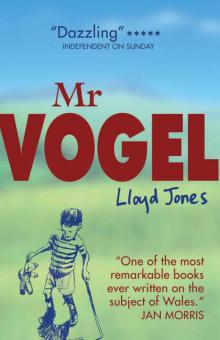 Mr Vogel
Mr Vogel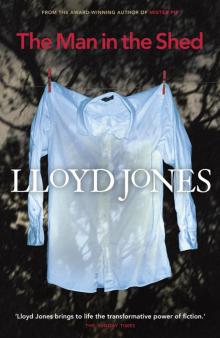 The Man in the Shed
The Man in the Shed Mister Pip
Mister Pip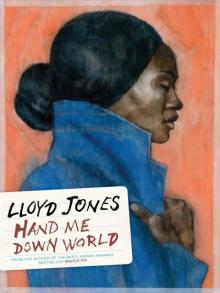 Hand Me Down World
Hand Me Down World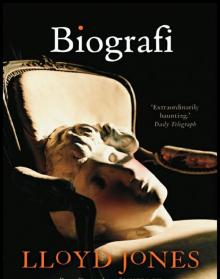 Biografi
Biografi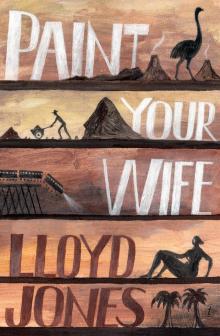 Paint Your Wife
Paint Your Wife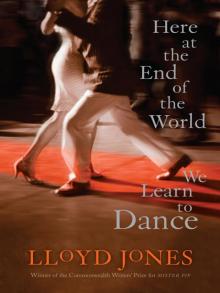 Here at the End of the World We Learn to Dance
Here at the End of the World We Learn to Dance My First Colouring Book
My First Colouring Book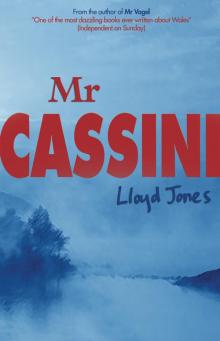 Mr Cassini
Mr Cassini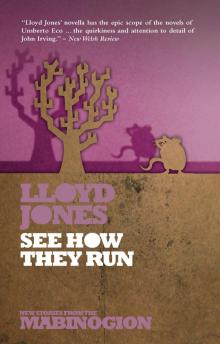 See How They Run
See How They Run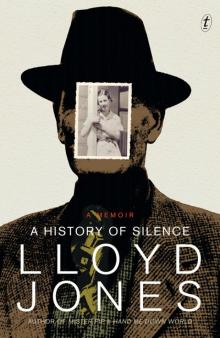 A History of Silence
A History of Silence The Book of Fame
The Book of Fame